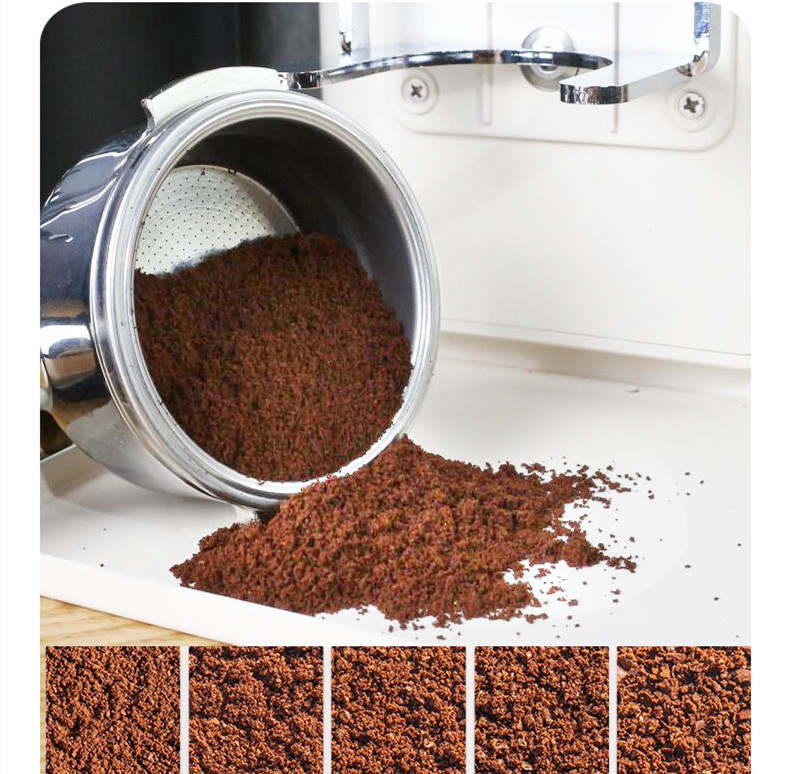Sustainable Coffee Grinding: Practices to Meet Environmental Standards
Coffee grinding is a cornerstone of eco-conscious brewing, yet its environmental impact often goes unnoticed. From material selection to energy efficiency, small adjustments in grinding habits can significantly reduce waste and carbon footprints. Below are actionable strategies to align coffee grinding with sustainability goals.
1. Prioritize Durable, Low-Impact Materials
The construction of coffee grinders plays a critical role in their environmental footprint. Opt for models built with corrosion-resistant stainless steel or aircraft-grade aluminum, which extend product lifespans and minimize resource extraction. Unlike plastic components, these materials resist degradation, reducing the need for frequent replacements.
Conical Burr Systems: Grinders with conical burrs, particularly those featuring multi-core designs, enhance particle consistency while lowering energy consumption. This efficiency translates to less power use per grind session, aligning with ISO 14001 environmental management standards.
Modular Designs: Choose grinders with replaceable parts, such as burrs or bearings, to avoid discarding entire units due to isolated wear. This approach combats the “throwaway culture” prevalent in kitchen appliances.
2. Embrace Manual Grinding for Zero-Energy Consumption
Manual coffee grinders eliminate electricity use entirely, making them ideal for eco-friendly routines. By relying on human effort rather than motors, these devices reduce household energy demand and greenhouse gas emissions.
Precision Control: Manual grinders offer adjustable settings for coarse to fine grinds, accommodating diverse brewing methods like French press or espresso. This versatility ensures optimal extraction without excess coffee waste.
Portability and Longevity: Built with robust materials, manual grinders often outlast electric counterparts. Their compact size also reduces packaging waste during shipping and storage.
3. Optimize Grind Quantity to Minimize Waste
Pre-ground coffee loses freshness rapidly, leading to flavor degradation and increased disposal of stale grounds. Grinding beans immediately before brewing preserves aroma and reduces the likelihood of overusing coffee.
Single-Serve Grinding: Measure beans based on exact brew requirements to avoid surplus. For example, a standard 8-ounce cup typically needs 14–18 grams of coffee.
Composting Spent Grounds: Instead of discarding used grounds, repurpose them as fertilizer. Coffee grounds enrich soil with nitrogen and deter pests like ants and slugs. If composting isn’t feasible, local gardens or community farms may accept donations.
4. Maintain Grinders for Extended Usability
Regular upkeep prolongs a grinder’s life, reducing the need for replacements and associated manufacturing emissions.
Daily Cleaning: Wipe burrs and chambers with a dry cloth to remove oil buildup, which can affect performance and flavor. Residue accumulation may also attract pests if grounds are stored improperly.
Proper Storage: Keep grinders in cool, dry areas away from direct sunlight to prevent material warping or corrosion. A dedicated kitchen spot minimizes handling damage.
Avoid Overloading: Grinding excessive beans at once strains motors (in electric models) or burrs (in manual ones), accelerating wear. Stick to recommended capacities for smooth operation.
5. Pair Grinding with Sustainable Brewing Methods
The environmental benefits of grinding extend to brewing choices. Methods like French press or pour-over require minimal equipment and produce no single-use waste.
Reusable Filters: Ditch paper filters for stainless steel or cloth alternatives to cut down on deforestation. These filters are dishwasher-safe and last for years.
Non-Toxic Equipment: Select brewers made from food-grade stainless steel or glass to avoid chemical leaching. Plastic components, especially in hot water contact, may release microplastics over time.
By integrating these practices, coffee enthusiasts can transform grinding into a sustainable ritual. From material selection to waste reduction, every step contributes to a greener planet without compromising quality.


